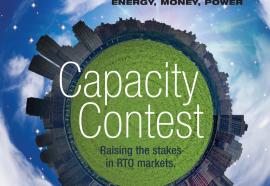Federal Feud
The jurisdictional battle rages on, with FERC and EPA squaring off against the states.
When Revolutionary War veteran Daniel Shays led an attack on the federal Springfield Armory in January 1787—the spark that ignited the federalist movement—he scarcely could’ve guessed that now, 225 years later, his spiritual descendants would still be fighting that very same battle.











